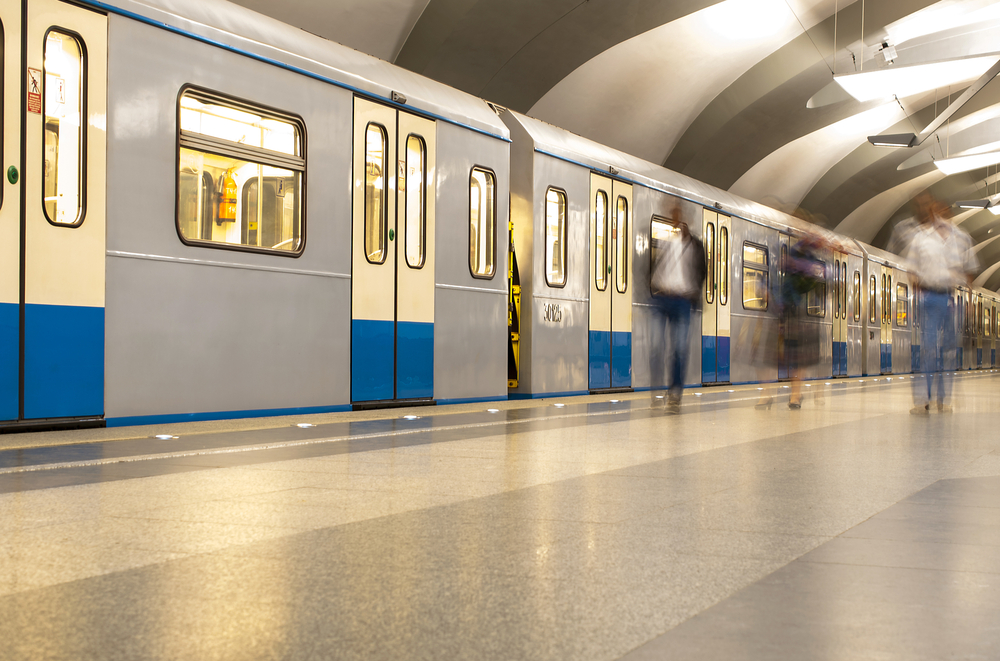Aqua Line and Delhi Metro Blue Line Connected Through Dedicated Walkway

Noida and Greater Noida are now connected through a Metro network. Uttar Pradesh chief minister Yogi Adityanath and housing minister Hardeep Singh Puri inaugurated the link between the two real estate hotspots on January 25, 2019. While construction work on the Aqua Line (that is the colour-coded name for the link) started in May 2015, it received the final safety clearance in December last year. Covering 29.707 kilometre (km) of length, the Aqua Line will do much more than improving the satellite city’s mobility quotient.
Route: The link has a total of 21 stations. While 15 of them is in Noida, the other six fall within Greater Noida. Among the halt stations are Sector 51, 71, 78, 101, 81, Dadri Road, Sector 83, 137, 142, 143, 144, 147, 153, 146, 149 in Noida, and Knowledge Park-II, Pari Chowk, Alpha 1, Alpha 1, Delta 1 and Depot Metro Station in Greater Noida.
Fare: Riders will have to pay a minimum fare of Rs 9 while the highest fare on the route would be Rs 50. Commuters could buy QR-coded paper tickets or use smart cards to take a ride.
Connectivity with Delhi: Commuters interchanging between Blue and Aqua lines will now get a major relief as a 300-metre walkway, connecting the Metro stations of Sector 51 on the Aqua Line and Sector 52 on DMRC's Blue Line, was inaugurated on August 18, 2019. The Noida Metro Rail Corporation (NMRC) has also provided free solar powered e–rickshaw services in this stretch to facilitate connectivity between the two Metro rail networks.
“While people have the option to walk the pathway, solar-powered e-rickshaws are available at two stations to ferry commuters free of cost. While a rickshaw ride would around 1.20 minutes, walking the stretch would take around 3.50 minutes,” NMRC Executive Director P D Upadhyaya had earlier said.
However, commuters will have to undergo a security check at respective stations after interchanging between the two different Metro lines. Tickets and smart cards of the Aqua Line cannot be used on the Delhi Metro and vice-versa.
Impact on realty
Developers, who have built residential projects in Noida and Greater Noida property markets pitch affordability as their unique selling point. Beyond any doubt, when compared to Delhi and Gurgaon, property in Noida and Greater in way more affordable. Data available with PropTiger.com show average rate per square foot (psf) in Gurgaon is Rs 6,100 while rates stand at Rs 5,200 in the national capital. Comparatively, the average rate of property in Noida and Greater Noida is, respectively, Rs 4,900 and Rs 3,200 psf.
Still, builders in the region found not many takers for their affordable housing projects for a variety of reason. The absence of a robust transport network was the biggest cause why homebuyers showed unwillingness to invest in the past half a decade amid rising project launches in the region. The Aqua Line would inspire those reluctant buyers to leave the fence and make a move.
"The inauguration of the Aqua Line Metro will also hike the rates of the units by 20 per cent in the area, along with its boost in the sales," says Mahagun Group Director Dhiraj Jain.
People who already have bought a flat in deep pockets of Noida and Greater Noida would see connectivity issues disappearing, and worth of their immovable assets going up. Investors, who bought property here to earn handsome rental also have a reason to cheer — they will have more takers, willing to shell out more money. According to Haris Murshid of the Skydeck Infrastructure, rental prices may go up by five or six per cent.
Since Noida, Noida Extension and Greater Noida will get better accessibility to the National Capital Region of Delhi, property in these markets would become even more lucrative as an investment option.
Decongesting Delhi
As more and more people move to Noida and Greater Noida with increased mobility, national capital Delhi can heave a sigh of relief, where housing options are limited and expensive while migrant population numbers rise year after year. Congestion on Delhi roads would decrease, too, as more and more people take a Metro ride to work. It is worth mentioning here that authorities have been struggling to decongest Delhi roads, but the desired results have yet to be achieved. With a Metro network in place, vehicular traffic on roads would recede —commute will be easier, time spent on roads will be less and pollution levels will come down.
The project will also generate significant direct and indirect employment of skilled, semi-skilled and unskilled workforce.


